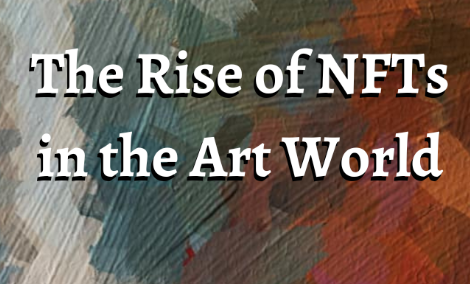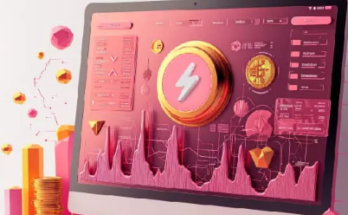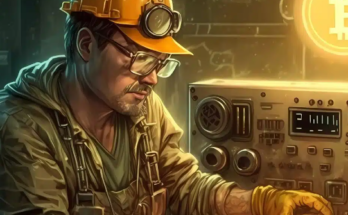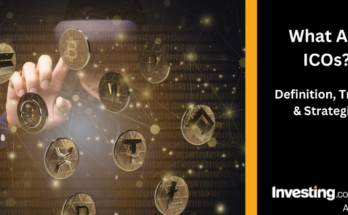The Rise of NFTs: What You Need to Know
In recent years, Non-Fungible Tokens (NFTs) have surged in popularity, transforming the way we perceive ownership and value in the digital realm. From art and music to virtual real estate and collectibles, NFTs have opened new avenues for creators and collectors alike. This comprehensive guide aims to demystify NFTs, exploring what they are, how they work, their features, pros and cons, and their future in the digital economy. Whether you are an artist, a collector, or simply curious about this digital revolution, understanding NFTs is essential in today’s rapidly evolving landscape.
What is The Rise of NFTs: What You Need to Know?
Definition of NFTs
NFTs, or Non-Fungible Tokens, are unique digital assets verified using blockchain technology, primarily on Ethereum. Unlike cryptocurrencies such as Bitcoin or Ethereum, which are fungible and can be exchanged for one another, NFTs are distinct and cannot be replaced or exchanged on a one-to-one basis. Each NFT carries specific information and attributes that establish its uniqueness and ownership.
The Significance of NFTs
The rise of NFTs represents a paradigm shift in how we understand ownership and value in the digital world. They allow creators to tokenize their work, ensuring authenticity and provenance, while enabling buyers to own and trade unique digital items. This shift has democratized access to art and collectibles, providing new opportunities for artists and collectors.
How The Rise of NFTs: What You Need to Know Work
NFTs operate on blockchain technology, which serves as a public ledger that records all transactions. Here’s a breakdown of how NFTs function:
- Creation (Minting): NFTs are created through a process known as minting, where digital assets (art, music, videos, etc.) are uploaded to an NFT marketplace. The asset is then converted into a digital token, which is registered on the blockchain.
- Ownership and Provenance: Each NFT is associated with a unique identifier, allowing for traceable ownership and history. This ensures that buyers can verify the authenticity and originality of the asset they are purchasing.
- Buying and Selling: NFTs can be bought and sold on various marketplaces, such as OpenSea, Rarible, and Foundation. Transactions are recorded on the blockchain, providing transparency and security.
- Smart Contracts: NFTs often utilize smart contracts, which are self-executing contracts with the agreement directly written into code. This allows for features such as royalties for creators upon resale, ensuring they continue to benefit from their work.
Features of The Rise of NFTs: What You Need to Know
NFTs come with several defining features that set them apart from traditional assets:
- Uniqueness: Each NFT is one-of-a-kind, making it impossible to replicate. This uniqueness is what gives NFTs their value.
- Indivisibility: Unlike cryptocurrencies, NFTs cannot be divided into smaller units. Each token is a whole asset.
- Interoperability: NFTs can be transferred between different marketplaces and platforms, allowing for greater liquidity and accessibility.
- Ownership Rights: Purchasing an NFT grants the buyer certain rights, which can include the ability to display the art, resell it, or use it in digital environments, depending on the terms set by the creator.
- Programmability: NFTs can include programmable features, such as royalties for the original creator upon resale, enhancing the revenue potential for artists.
Pros of The Rise of NFTs: What You Need to Know
| Pros | Description |
|---|---|
| Ownership of Unique Digital Assets | NFTs provide true ownership of digital assets, unlike traditional digital files. |
| New Revenue Streams for Creators | Artists can monetize their work directly through sales and royalties. |
| Innovative Use of Technology | NFTs represent a new way to authenticate and trade digital items. |
| Community Engagement | NFTs often foster community around creators and collectors, enhancing the experience. |
Cons of The Rise of NFTs: What You Need to Know
| Cons | Description |
|---|---|
| Market Volatility and Speculation | The NFT market can be highly unpredictable, with prices fluctuating significantly. |
| Environmental Impact of Blockchain | The energy consumption associated with blockchain technology raises concerns about sustainability. |
| Legal Grey Areas | Issues surrounding copyright and ownership can be complex and confusing. |
| Risk of Scams and Fraudulent Projects | The rise of NFTs has attracted scams and counterfeit assets, making due diligence essential. |
The Rise of NFTs: What You Need to Know Alternatives
| Alternatives | Description |
|---|---|
| Traditional Art Collecting | Buying and collecting physical art pieces. |
| Cryptocurrencies | Investing in digital currencies like Bitcoin or Ethereum. |
| Digital Collectibles | Collecting digital assets not tied to blockchain, like game skins. |
| Virtual Real Estate | Investing in virtual properties within online worlds (e.g., Decentraland). |
Conclusion and Verdict: The Rise of NFTs: What You Need to Know
The rise of NFTs has transformed the digital landscape, providing new opportunities for artists, collectors, and investors. While the potential for innovation and creativity is immense, it is essential to navigate this space with caution. Understanding the mechanics of NFTs, their benefits, and their drawbacks is crucial for anyone looking to engage with this new digital frontier. Whether you are a creator seeking to monetize your work or a collector searching for unique assets, NFTs offer an exciting avenue to explore.
FAQs: The Rise of NFTs: What You Need to Know
- What are NFTs used for? NFTs can be used for a variety of purposes, including digital art, music, virtual real estate, collectibles, and even in-game items.
- How can I create my own NFT? To create your own NFT, you need to choose a marketplace, upload your digital asset, and mint it into an NFT. Each platform has specific steps to guide you through the process.
- Are NFTs a good investment? Investing in NFTs carries risks, much like traditional investments. It’s important to conduct thorough research and understand market dynamics before investing.
- What platforms are best for buying NFTs? Some popular NFT marketplaces include OpenSea, Rarible, Foundation, and SuperRare, each offering different features and types of assets.
- Do NFTs have a negative environmental impact? Yes, the blockchain technology that underpins NFTs has raised concerns about environmental sustainability due to its high energy consumption. Many in the industry are exploring more eco-friendly alternatives.
This review is structured to provide a thorough understanding of NFTs, addressing key aspects, benefits, challenges, and future implications, while adhering to SEO optimization principles. The use of tables enhances readability and organization, ensuring a clear and engaging presentation of information.



